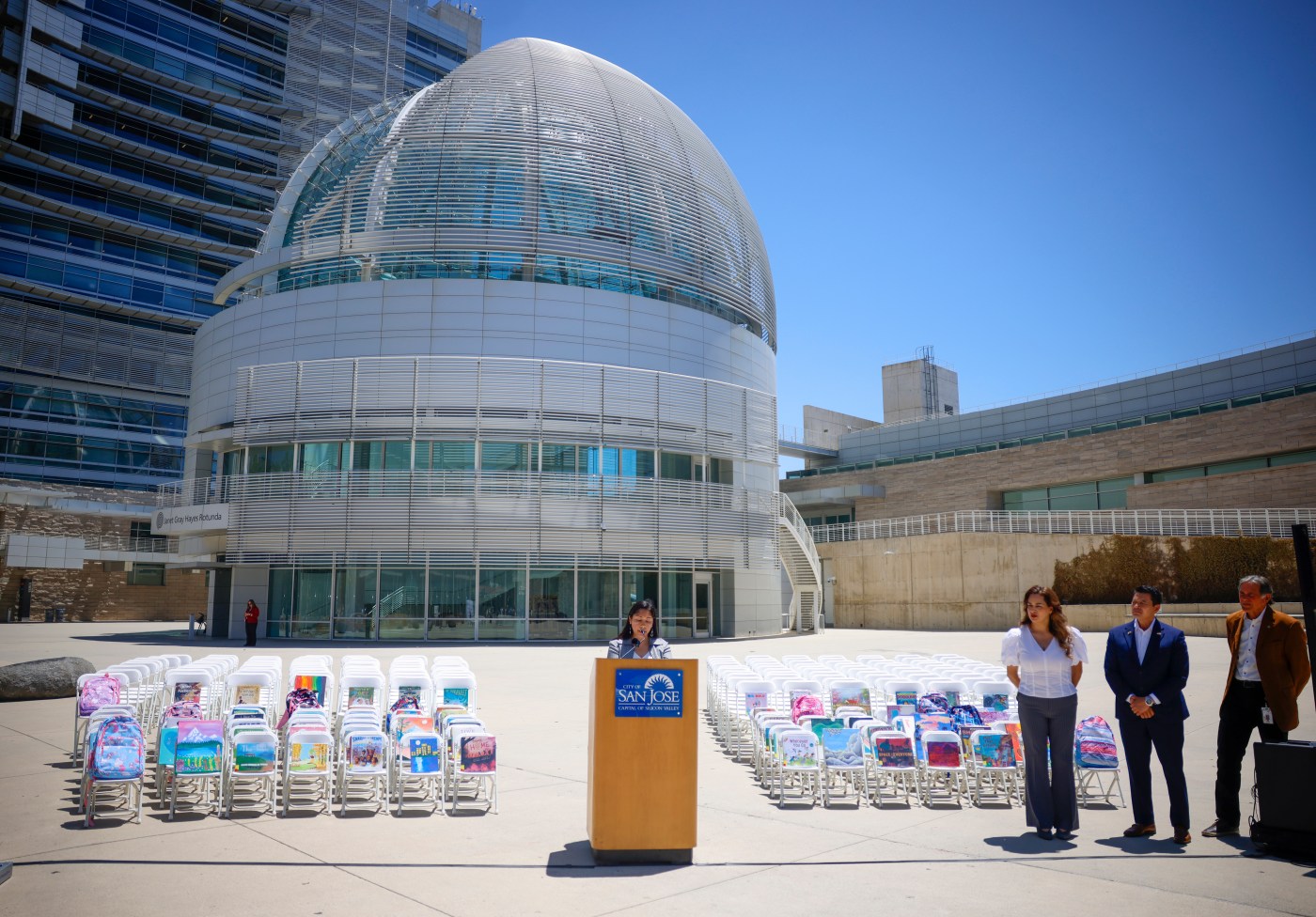With the city preparing to commit more resources to building interim housing, some elected leaders want to make sure that San Jose does not lose sight of the importance of investing in homelessness prevention as a greater number of families, including children, become unhoused every day.
Despite the city’s plans to add more than 1,400 placements to its shelter system this year, District 2 Councilmember Pamela Campos, who represents several neighborhoods in South San Jose, said its efforts have often overlooked the impact on families with children. Only one of the city’s interim housing communities serves that dynamic at a time when at least 2,200 local students are experiencing homelessness and 30% of people living along city waterways are single mothers with children.
But along with providing more housing for families, Campos has argued for more resources toward homelessness prevention.She noted it has proven to be a more cost-effective method for keeping residents on their feet and off the streets, and could be more critical as funding cuts to housing and social welfare programs threaten to add to the city and region’s homeless epidemic.
“With our budget, we have an opportunity to support our families through prevention resources, but families are currently being left out, and the data is clear that the best thing we can do is to prevent homelessness,” Campos said at a press conference Tuesday. “What is also clear is that we must invest more resources into prevention, into addressing the problem at its source, rather than simply treating the symptoms.”
Over the past few years, San Jose city leaders have opted to redirect funds from Measure E, the voter-approved ballot measure for affordable housing, towards expanding and operating its shelter system. Next week, the City Council may again follow the same pattern as it attempts to close a small budget deficit and establish a policy for more flexible use of Measure E funds in the future.
While the use of the majority of Measure E funds for interim housing solutions has led to contentious debate, it has allowed San Jose to increase its shelter system more than any other large city on the West Coast this year in converting hotel and motel rooms, building safe parking and safe sleeping sites and tiny home communities. However, despite the inroads the city has made, it still lacks the capacity to serve the estimated 5,500 unsheltered homeless residents within its boundaries, which could continue to swell without additional resources, as the federal government could cut housing vouchers, Supplemental Nutrition Assistance Program (SNAP) and Head Start offerings.
Eulalia Garcia, a 28-year resident of the city, said she was evicted from her home a few years ago while in intensive care at a nearby hospital. Garcia’s 23-year-old son was forced to give up on his higher education goals to help her financially due to her disability. While Garcia stays with a friend, her son sleeps at a safe parking lot because they cannot afford another place to live.
“We signed up for affordable housing wait lists, but there is no availability, and many times they tell you that unless you’re literally living on the street, they cannot help you,” Garcia said. “I’m not asking to live for free. I’m just asking for rent that we can afford (and) that allows us to live with dignity.”
Jocelyn Arenas, chair of the Bill Wilson Center Youth Council, said she faced similar trials and tribulations as she became a mother at the age of 16.
“It’s the foundation for our well-being, our mental health, our ability to work or to go to school and to thrive as a family, but too often, young people and families like mine fall through the cracks,” Arenas said. “The resources that do exist are complicated, limited, or simply out of reach and when you’re a young parent or you’re a young person coming from a marginalized background, the obstacles feel even heavier.”
Although San Jose has focused on building its shelter system, Campos said that investments in homelessness prevention have proven to be effective in helping residents teetering on the brink of falling into that predicament, pointing to the Heading Home initiative, which has helped house thousands of children and prevented thousands of families from becoming unhoused.
Campos cited a study of the countywide homelessness prevention system, which includes financial assistance and rapid rehousing programs, finding that 94% of families remained in stable housing one year after receiving services. She said the same study also found a broader benefit, where every dollar spent on financial assistance generated nearly $3 in community resources, noting it could save taxpayers a third of what they are investing in transitional housing or emergency shelters.
“These (return on investments) are unheard of in any other sector, but for some reason, we choose to ignore this logic,” Campos said as she spoke in front of empty chairs set out in front of City Hall on Tuesday to represent the thousands of youths experiencing homelessness. “Conversely, when we disinvest from our youth, we are rapidly building a debt that we will inevitably need to pay.”
Although rhetoric between the city and Santa Clara County leaders has escalated in the past several months over the path to reduce homelessness, District 1 Supervisor Sylvia Arenas committed to working with the city and implored it to stay committed to “smart housing solutions.”
“I’m asking them to please keep their investment in homelessness prevention, to please continue to include funding for preventing homelessness for those experiencing domestic violence, and to please continue building the kind of affordable housing that keeps families from becoming homeless,” Arenas said. “But this is a joint effort. It isn’t only about the City Council. It’s also about the county, and now, as a current county board member, I recognize that our children and our families cannot afford finger-pointing or blame game between our jurisdictions.”





